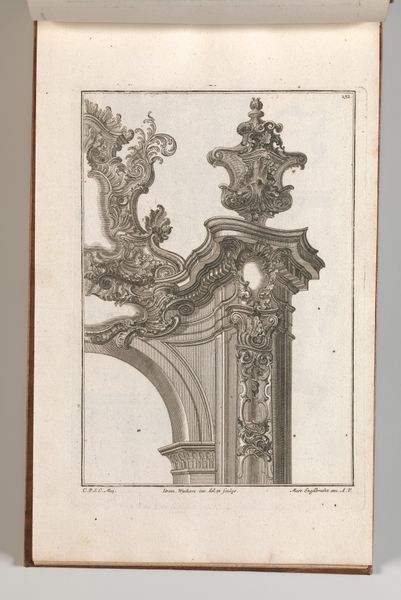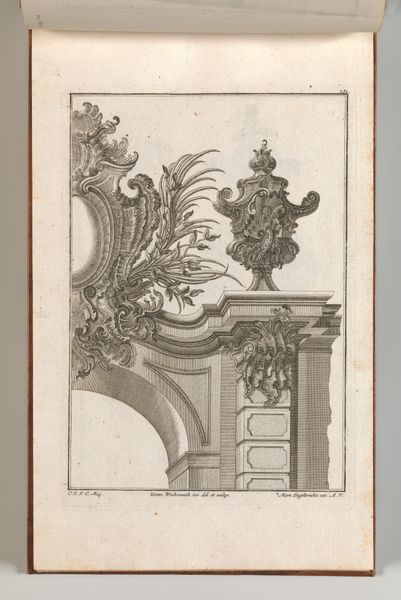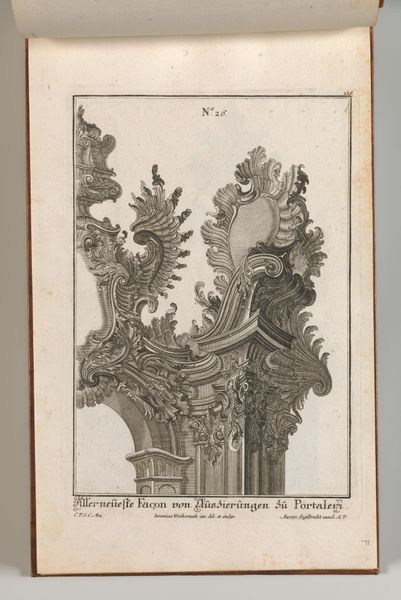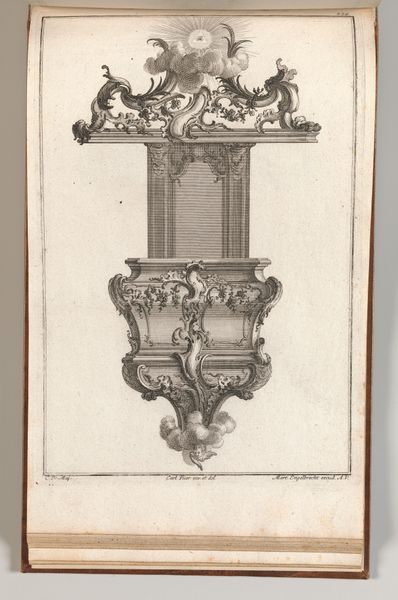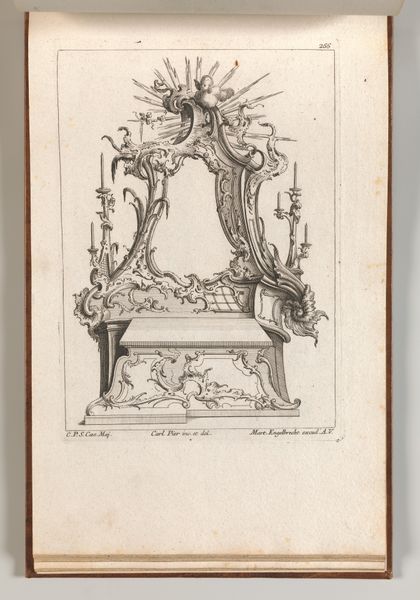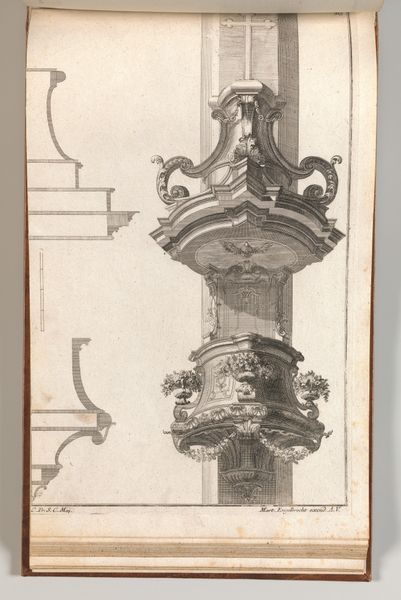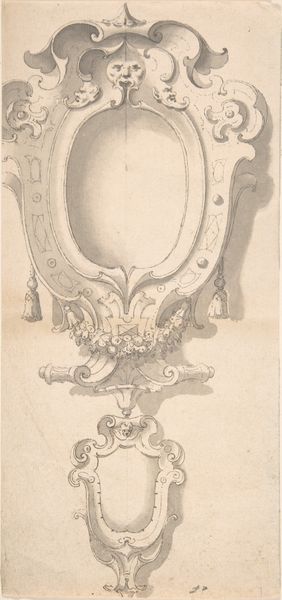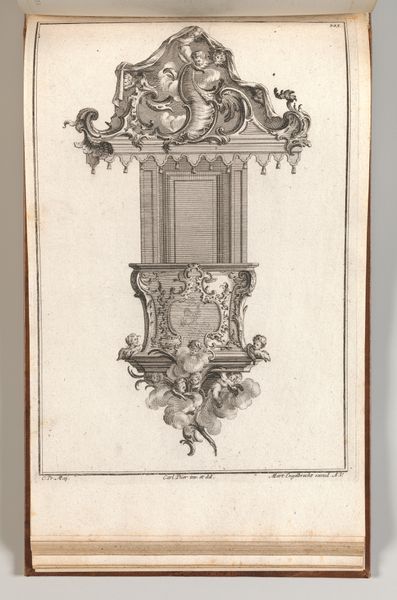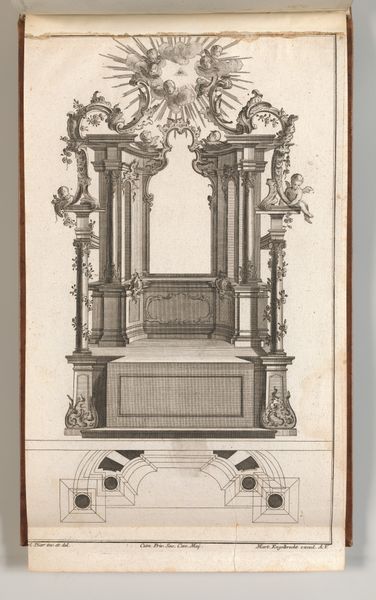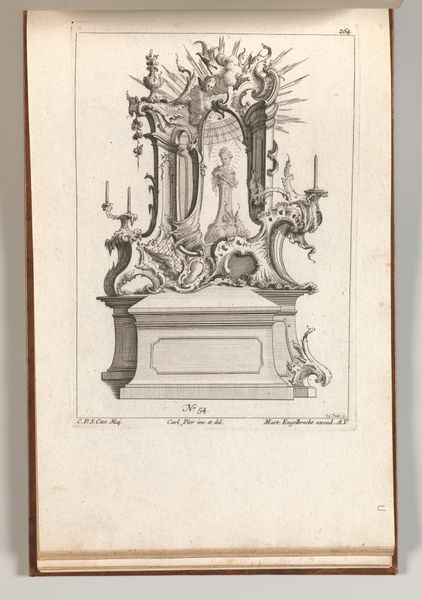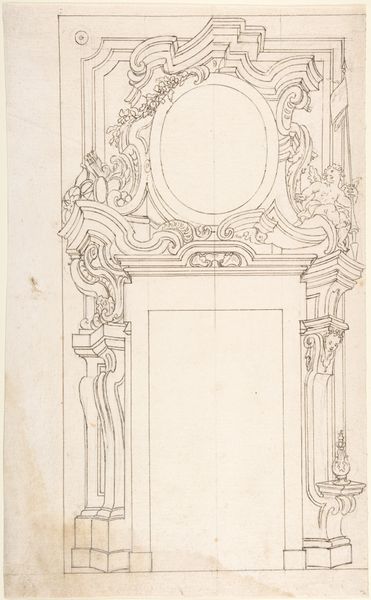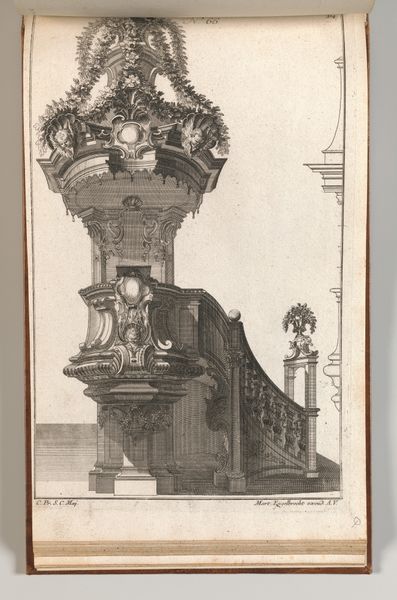
Suggestion for the Decoration of Top Right Side of Portal, Plate 2 from 'Allerneueste Façon von Auszierungen zu Portalen' 1745 - 1755
0:00
0:00
drawing, print
#
drawing
#
light pencil work
# print
#
sketch book
#
personal sketchbook
#
pen-ink sketch
#
pen and pencil
#
pen work
#
sketchbook drawing
#
watercolour illustration
#
storyboard and sketchbook work
#
sketchbook art
Dimensions: Overall: 8 7/16 × 13 3/4 in. (21.5 × 35 cm)
Copyright: Public Domain
Curator: This delicate print, "Suggestion for the Decoration of Top Right Side of Portal, Plate 2 from 'Allerneueste Façon von Auszierungen zu Portalen'", was created by Jeremias Wachsmuth between 1745 and 1755. Its linear precision is quite striking. Editor: It does evoke a world of lavish excess. I see architectural aspiration pushing into realms of social dominance through opulent design. The empty oval spaces feel like mirrors reflecting back the self-importance of the patrons. Curator: Precisely. Notice how the rhythmic repetition of shell motifs and scrollwork contributes to an overall sense of controlled exuberance, each element carefully considered in relation to the whole. The drawing medium allows us a rare peek into the formal artistic practices used in architectural rendering. Editor: Indeed, this object grants insight into the gendered dimensions of public and private space. I question the accessibility this architecture created, how spaces performed patriarchal, classist structures solidifying male authority while simultaneously placing female bodies under surveillance. Who were the spaces in these structures *for*? Curator: That’s a relevant line of inquiry for today. But the engraving's mastery over line and shadow generates three-dimensionality and emphasizes its elaborate decorative components; for example, how the curling acanthus leaves introduce the interplay of dark and light creating movement. Editor: What do you suppose a modern reading brings forth from the shell motifs, scrolls, and acanthus? This can perhaps speak to gender expression and fluid forms today that challenges conventional architectural restrictions based on social stratifications. The lack of interior space begs the question: what is the drawing communicating? Curator: An artistic testament to the ideals of order and symmetry inherent in the Baroque aesthetic itself! It reflects a desire to manifest power via perfect proportion and elaborate detail. The two vacant oval spaces wait for content, requiring only that balance between the structure and any eventual, aesthetic application be sustained. Editor: Yes, and perhaps its emptiness opens a void, leaving the door ajar for discourse as we continue thinking about Wachsmuth's era in conversation with contemporary art practices and spaces. Curator: Indeed, there remains a certain timeless appeal, perhaps from its masterful visual vocabulary. Editor: True, a space to contemplate not just form but its complicated legacies and open the possibility for new narratives, where dialogue holds sway.
Comments
No comments
Be the first to comment and join the conversation on the ultimate creative platform.
